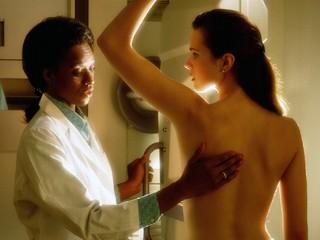
Well, as we all know it's October and that means (apart from Halloween) it's Breast Cancer Awareness month. And for me, this is a much bigger deal than it is for most people and this is because breast cancer runs in my family; my mom was diagnosed at the age of 36, my aunt (who didn't get screened) died at the age of 37 and my sister was diagnosed last year at the age of 32.
I saw, first through the eyes of a child and then an adult the impacts breast cancer (like any cancer) can have on a family. When my mom was diagnosed I was only eight but I was old enough to see that something was very wrong. However, when my sister was diagnosed I saw first hand how it ravaged her body when I cleaned her mastectomy wounds and radiation burns. I also remember how during her chemo treatment, she would curl up in the fetal position on my brother's lap and she even threw up on him a couple times, but he never let that get to him. Thankfully, both my mom and my sister are cancer free and I am thankful for every day that they are alive <3 And in this myTake, I want to talk about our first line of defense. I speak of course of mammograms.

What is a mammogram?
For those of you who don't know, a mammogram is an X-ray of the breast to visualize the internal structures. It looks for charecteristics such as microcalcifications and masses of tissue that could indicate the presence of breast cancer. This allows breast cancer to be detected early, when it is most treatable.

Who should have a mammogram?
All women should be getting yearly mammograms starting at age 40-45 (depending on what guidlines you look at) with a baseline mammogram between the ages of 35 and 39. However, if you have a family history (specificically a 1st degree relative such as a mother or sister) then you should start screening sooner. The general rule of thumb is that you should start screening when you're 10 years younger than your 1st degree relative was diagnosed. However, you should not start screening before turning 25.
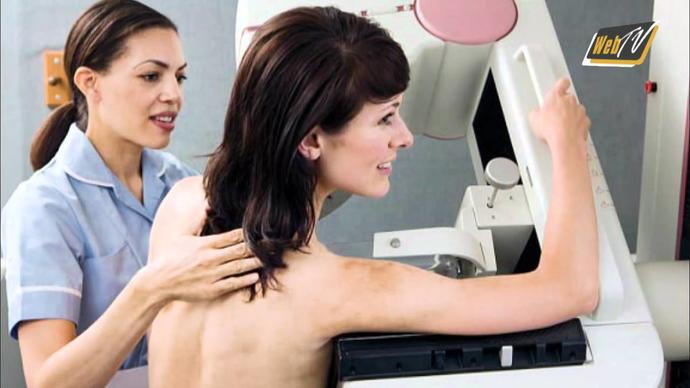
What Happens when you get a mammogram
For this I'll just share my personal experience. I arrived at the clinic and when I got there one of the receptionists took me back to a changing room and told me to undress from the waist up, wipe off any deoderant and put on a pink gown. When I was done, she led me to a waiting room and gave me a form to fill out that looked like this:
https://dvrphx.com/forms/Mammo_Screening.pdf
My name was then called and I was lead into the screening room by the technologist, and when we got into the room, she explained to me what she was going to do. She then told me to take off my gown and had me stand in front of the machine to take the first view where it was up straight (CC view). She lifted and arranged my breast in position onto the cassette pushed me into the machine to get as much of the breast as possible into the film. She then lowered the compression paddle to squeeze my breast against the cassette and went behind a glass shield to take the picture. She repeated the procedure on the other breast. For the next two images she angled the machine 45 degrees and had me drape the arm over the side of the cassette as she got my breast in position and compressed it. She then reviewed the images but the radiologist wanted two more images of each breast. The first one was just like the CC except she drew more of the lateral portion of my breast onto the cassette so the nipple was offset and facing the side of the other breast. The second kind was with the machine rotated 90 degrees and the cassette in between my breasts and the compression coming from the side. This was called the LM view. Afterward she checked to make sure all the images were OK, we hugged and I had an interesting talk with her. Then she lead me back to the changing room where I got redressed and then I went home. A week later, I got the news; all clear.

10 things you should know about mammograms
1. They are our beat defense against breast cancer
A recent harvard study showed that 75% of women were getting screened regullarly yet 75% of all cancer deaths were among the 25% of women who don't get screened. This means that if you get screened for regularly and develop breast cancer, you would have a 1 in 12 chance of dying from it and if you didn't you would have a 3 in 4 chance of dying from it. 9x higher!!! This also means that if every woman got screened the annual death toll from breast cancer in the US would go from 42,000 to 14,000.
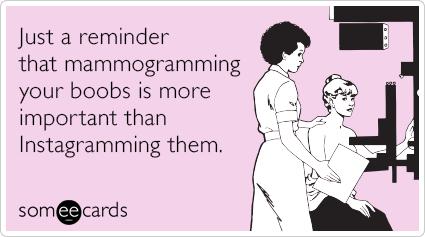
2. They are completley safe
A mammogram will expose a woman to .0004Sv (an Sv is a unit of radiation) and the risk of cancer increases 5.5% for every Sv of radiation so each mammogram would increase the risk by .0022%, so it would take 450+ mammograms to increase the risk of breast cancer by just 1% and an average woman may have only 1/9th of that. Also, the compression won't cause cancer to spread (if that was true then a tight hug would be dangerous) and in case you were worried, your boobs don't sag or "deflate" after the mammogram; they pop right back into their original shape when the paddle is released.

3. There is no alternative for screening
there are some alternatives proposed for mammography such as breast thermography, untrasounds and MRIs. But thermography has been shown to miss 3/4s of the cancers detected by mammograms, ultrasounds cannot view the fine detail of breast tissue the way that mammography can and MRIs are too expensive to be used for population screening.
4. Not all mammograms are created equal
If you canm try to schedule and an appointment where they offer either breast tomosynthesis (3D mammograms) or spectral mammograms. For those of you who don't know, tomosynthesis is where the top part of the mammography machine moves over the cassette and takes multiple pictures and make a 3D image. Spectral mammography is where they inject a radioabsorbant dye into your bloodstram so it allows the radiaologist to better view the "vascular structure" of the breast. Both of these rival MRIs in sensitivity. If you can't get those, at the very least try to get a digital mammogram.
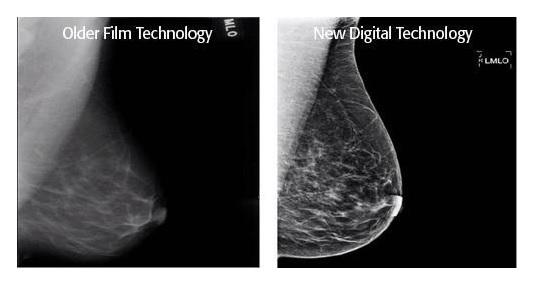
5. They compress because they care
OK, I know that the compression of the breast is what most women worry about before their first mammogram and while I will be the first to admit that the whole concept of sqishing a woman's breast between two plates may seem a bit "intrusive" to say the least, it extremley important for several reasons. For one, it makes the breast thinner so a lower radiation dose is required, it spreads out the breast tissue so it can be better viewed on a 2-D image and it holds the breast still to eliminate motion. Below is a picture of a compressed vs uncompressed breast.
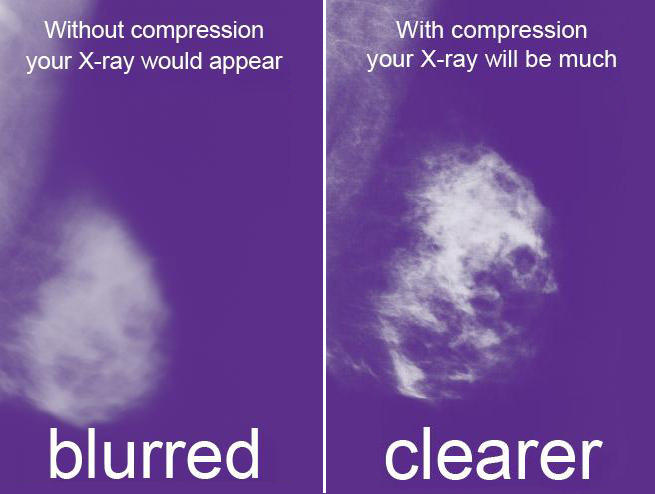
6. It doesn't feel like a clamp or vice grip
I don't know how many times I heard people say that when you go for a mammogram, "they'll smash your boob in a vice grip" or they "ruthlessly clamp it between two metal plates [lol]" and I beforehand I cringed at the thought of it. But in reality they don't "ruthlessly clamp" your breast between "two metal plates" they firmly squeeze it between the cassette and plexiglass paddle. You will feel a tight pressure on your breast (like having your blood pressure taken) but in no way does it feel like a vice grip. Also, be forewarned, the plates are a bit cold and the tech will be tugging on your breast a lot, but it is still 100% tolerable.

7. Done properly, there's no reason it should be painful
Before my mammogram, my tech was so nice to explain it to me why it shouldn't hurt. Contrary to popular belief, a harder squeeze doesn't mean a better image, a flatter breast does. When the compression paddle comes and flattens the breast it stretches the coopers ligaments of the breast tissue which causes discomfort, but once they've reached the limit of their elasticity, they can't be stretched any further and adding more force will only strain it. So adding pressure beyond the point that the skin on the breast becomes taught will only hurt the patient without improving the image quality. So the bottom line is this (assuming your breasts aren't tender), if the compression hurts, the tech is squeezing to hard BUT if you don't feel any discomfort, she's not squezing hard enough so if she lowers the paddle in place and you're not uncomfortable, say b!%$h, squeeze harder (well don't call her that but you get the picture.

8. Size doesn't matter
For anyone worried about getting a mammogram because you think it'll hurt more because you're flat or big chested, don't be. My tech explained this as well. Yes, they squeeze harder for the larger chested ladies and lighter for the small chested girls, but because it's spread out over a larger area for girls with large breasts (and a smaller one for those with smaller ones) the pressure on the breast (force per unit area) is the same so the nerve endings will be firing with the same intesnsity and regardless of size, everyone has the same ammount of nerve endings in their breast (well the nipple has a set number of nerve endings per unit area so a larger nipple will have more nerve endings but during a mammogram, they don't squeeze the nipple) so it would feel the same for everybody.

9. Always make sure to relax and be prepared for what's coming
If you tense up when getting a mammogram because you're worried about it hurting, your tense pectoral muscle will put additional strain on the connective tissue of your breast and it "hurting" will become a self fufilling prophecy. If you relax it will relive the strain on the connective tissue and a) you get a more pleasent experience and b) the tech gets more breast onto the cassette for the image (it's a win win). Also, if you go into the exam, expecting it to be uncomfortable, you won't tense up when you experience discomfort. There's also no reason to be embarrassed, the mammotechs perform dozens of these exams every day and behave in a very manner-of-fact way but are still humorous. Two other pieces of advice: breathe deeply through your stomach and DON'T LOOK DOWN.
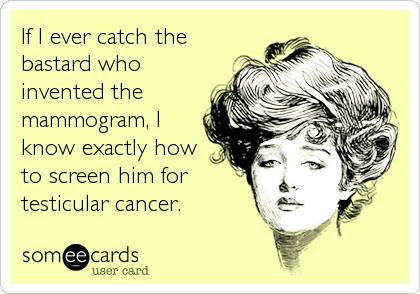
10. They are a girls' very b(r)e(a)st friend
Even though mammography has many proven benefits, all over the internet, I see posts like this "This, combined with the constant stories from women who have them on how uncomfortable, painful, and humiliating mammograms are, make me suspect the entire purpose of this mammogram scam is to sexually torture women and get away with it." And "Can you imagine the whining we would hear if men had to screen for testicular cancer by having their balls put in machine that compresses them like pancakes?" and basically arguning that it's somehow "unfair" that we have to subject ourselves to this kind of test while men don't. I personally get very upset when I read things like that for several reasons. First of all, you would be very hard-put to argue that testicular cancer is the "male equivalent" of breast cancer. What is you may ask? well, strictly speaking, there isn't one for one simple reason: men get breast cancer and for diagnostic purposes they do perform it on men. I talked to my tech about this and she (apart from confirming that it was a man who invented this machine) said that yeah she performed mammograms on male patients and remember what I said about how everyone has the same ammount of nerve endings in their breast? Well, that applies to men to so it wouldn't be any more painful for a man than a woman. But I guess if you where to argue that there is a demographic equivalent of breast cancer in men it would be prostate cancer and they indeed don't have to put their junk in a vice grip to image the prostate for screening purposes becuase there is no exam that can image the prostate for screening purposes. And to clarify, a digital rectum exam isn't the equivalent of a mammogram because it doesn't image the prostate, the doctor merely palpates with his finger; i.e it would be the equivalent of a manual breast exam. And this is why I get so upset when people make this comparison: as I mentioned, breast cancer runs in my family but the genes that are responsible for causing hereditary breast cancer in women also cause prostate cancer in men. In fact, 2 years ago my favorite cousing died at the age of 33 from prostate cancer and if there was a screening tool that could image the prostate to look for cancer they might have caught it early enough and he might still be alive.

So, it's in this light that I would hope women would view mammograms as a blessing rather than some terrible procedure that has been unfairly imposed on us and to be thankful that we have this sort of technology available to help catch early and better treat breast cancer. And if I ever did meet the man who invented the mammogram, I would thank him so much for saving my mother's, sister's and probbably one day my own life <3 <3 <3

So ladies, when the time comes go get your mammograms and remember, as unpleasant as they may be, better get your boobs squished once a year than this
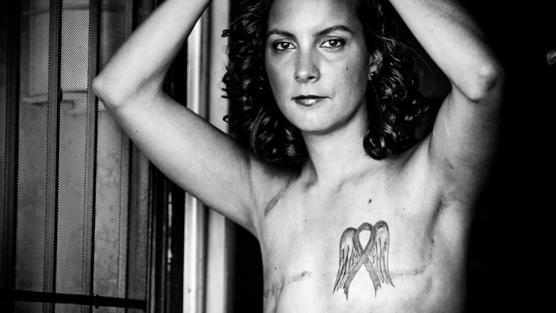
Or this

So, if this myTake helped you, feel free too share it with your friends or family.
 Holidays
Holidays  Girl's Behavior
Girl's Behavior  Guy's Behavior
Guy's Behavior  Flirting
Flirting  Dating
Dating  Relationships
Relationships  Fashion & Beauty
Fashion & Beauty  Health & Fitness
Health & Fitness  Marriage & Weddings
Marriage & Weddings  Shopping & Gifts
Shopping & Gifts  Technology & Internet
Technology & Internet  Break Up & Divorce
Break Up & Divorce  Education & Career
Education & Career  Entertainment & Arts
Entertainment & Arts  Family & Friends
Family & Friends  Food & Beverage
Food & Beverage  Hobbies & Leisure
Hobbies & Leisure  Other
Other  Religion & Spirituality
Religion & Spirituality  Society & Politics
Society & Politics  Sports
Sports  Travel
Travel  Trending & News
Trending & News
Most Helpful Opinions